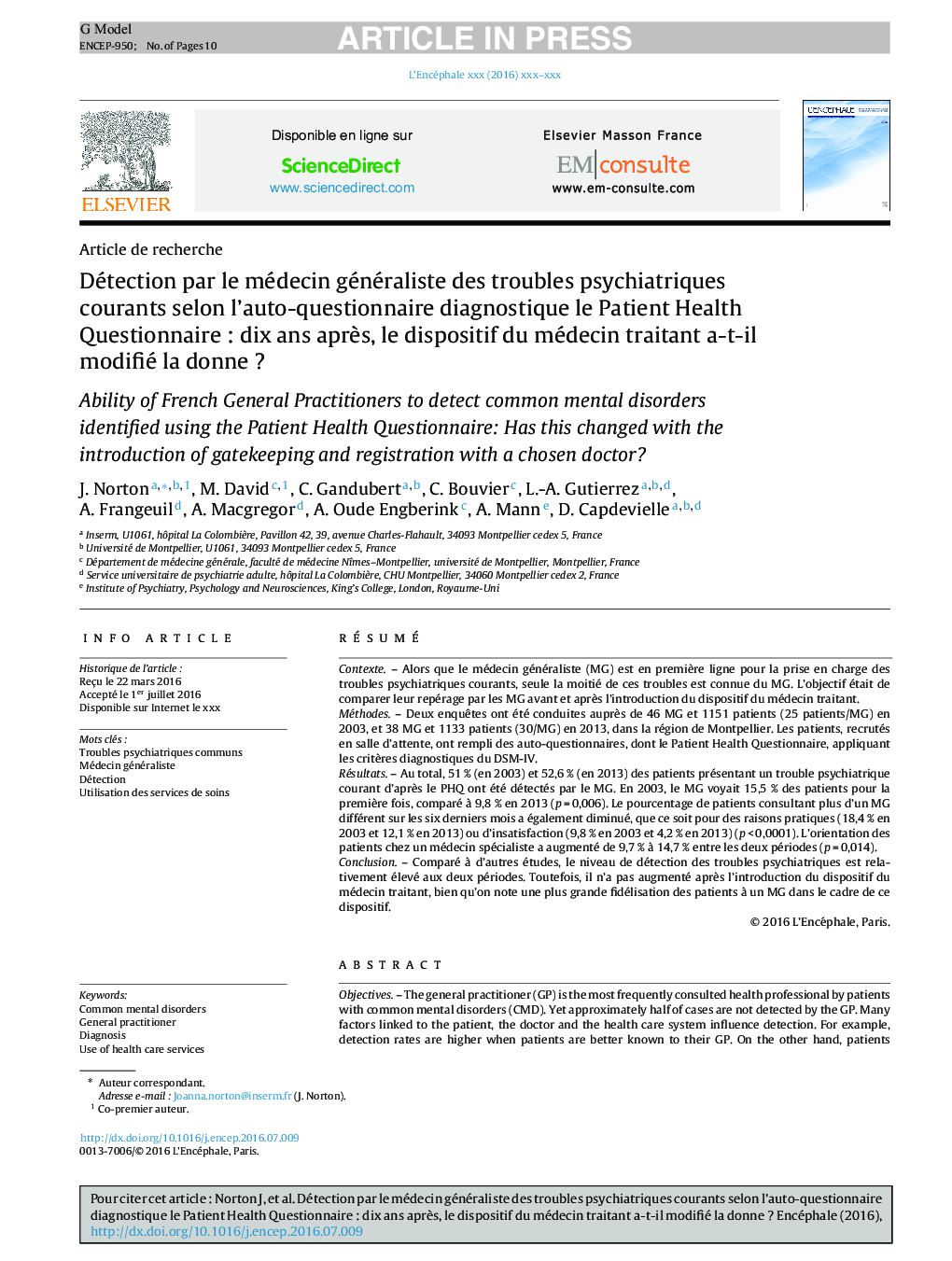| Article ID | Journal | Published Year | Pages | File Type |
|---|---|---|---|---|
| 8814700 | L'Encéphale | 2018 | 10 Pages |
Abstract
This is one of the first studies to report data from two repeated surveys carried out before and after a change in the health service organisation, with data collected from both the patient and the GP. We report relatively high GP detection rates for the two periods, with about 50% of CMDs, including subsyndromic conditions, detected by the GP. Rates are considerably higher for the threshold disorders. The overall detection rate did not increase as expected between the two studies. Detection is a complex topic, involving issues such as the suitability of applying categorical DSM-IV criteria diagnoses to primary care, the relevance of detecting subthreshold conditions and the ability of cross-sectional studies to correctly assess the ability of GPs to recognise cases. The introduction of gatekeeping with the choice of a Preferred Doctor has led to a decline in the frequency of doctor-shopping, whatever its reason, with patients no doubt being better known to the GP. Yet it appears most patients had already chosen a GP they were loyal to before the scheme, with a similar proportion of patients consulting their chosen GP or Preferred Doctor on both survey-days in 2003 and 2013, suggesting the scheme may to some extent only have officialised what already existed with respect to having a usual GP. The French reform still allows for doctor-shopping which can be considered as a positive aspect of the scheme: patients either dissatisfied with previous care or needing to change GP are thus able to “test” and choose the doctor that best suits their needs.
Keywords
Related Topics
Health Sciences
Medicine and Dentistry
Psychiatry and Mental Health
Authors
J. Norton, M. David, C. Gandubert, C. Bouvier, L.-A. Gutierrez, A. Frangeuil, A. Macgregor, A. Oude Engberink, A. Mann, D. Capdevielle,
